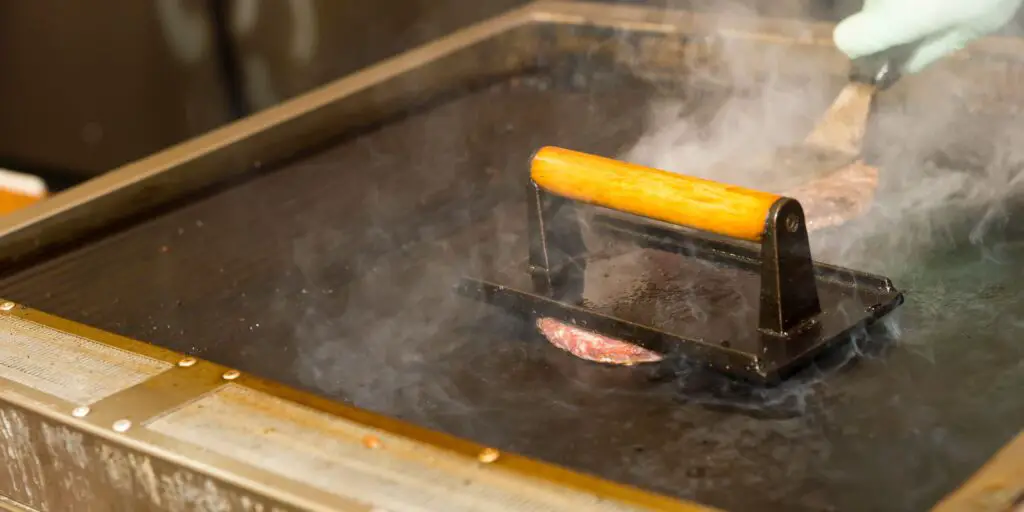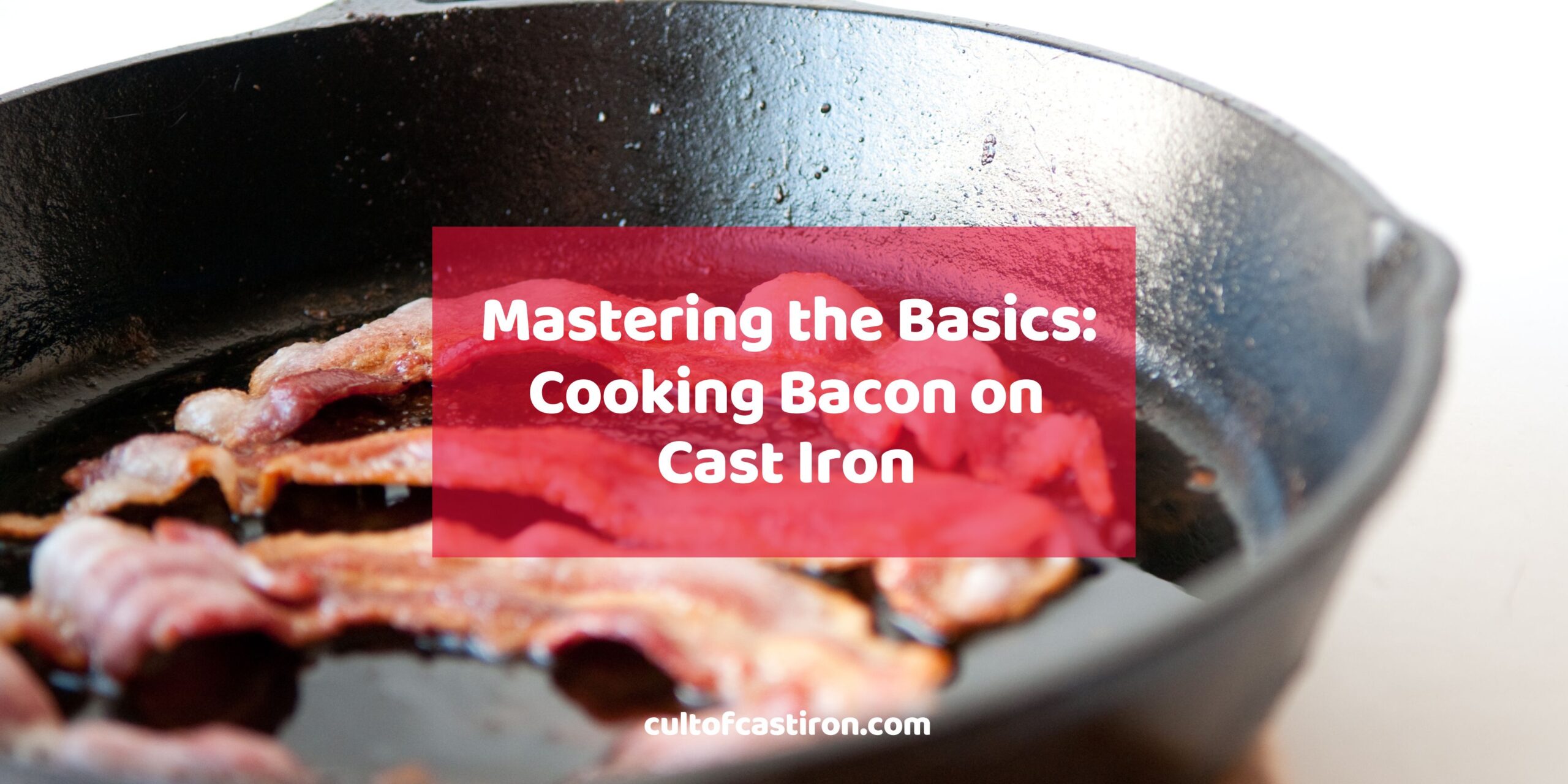Bacon and cast iron pans are a match made in heaven. Thanks to their heat retention and distribution capabilities, cast iron skillets are the perfect kitchen tool for cooking bacon. Since they can cook meats evenly, this results in crunchy and well-made strips just oozing with flavor in every bite!
While preparing bacon may seem like a no-brainer, bacon lovers should know that there are different ways to cook it with a cast iron pan. To bring you one step closer to bacon mastery, this guide will teach you the different ways of cooking bacon with a cast iron skillet.
How to Cook Bacon in a Cast Iron Skillet: 4 Ways
The results from these four methods of cooking bacon will vary, so I’d recommend trying each one to see which method produces the best flavor-to-effort ratio for you.
1. The Cold Pan Method
The cold pan method is one of the more traditional ways to prepare bacon with a cast iron skillet. Since the bacon is gradually cooked, it has more time to release fat. This ensures that your strips are evenly cooked and pack a world of flavors with every bite.
How to Do It:
- Bring out your cold skillet and place your bacon on top.
- Turn on the heat to low then gradually increase it to medium.
- Let the bacon sizzle and flip it occasionally until it reaches your preferred level of crispness.
2. The Hot Pan Method
As the name suggests, this method requires a pre-heated pan. Compared to the cold pan method, this variation results in faster cooking times, but you will need to use a small amount of oil for it.
How to Do It:
- Bring out and preheat your cast iron skillet over medium to high heat.
- Coat the pan with a small amount of oil to prevent sticking.
- Place your bacon slices on top of your hot skillet.
- Grill the bacon and flip it occasionally until you reach your desired level of crispiness.
This method of cooking bacon may result in uneven crispiness in your strips as hot spots may have developed on the surface of your pan. Also, the quick cooking time may not render a lot of the fat from the bacon. The end result will be a slightly gummy and chewy strip of bacon.
3. The Water Method
While not as popular as the two mentioned techniques, the water method is a unique way to cook bacon. It’s generally a combination of steaming and frying. Preparing your bacon this way will result in plump, crisp, and delicious strips.
How to Do It:
- Place the bacon on top of a non-preheated pan and place just enough water to cover your strips.
- Cook it in high heat but adjust it to medium once the water starts to boil.
- Once the water evaporates, lower the heat again and sizzle your bacon until you achieve ideal crispiness.
By steaming the bacon in water, the fat in the meat gets rendered while the meat is able to retain its moisture. Cooking bacon this way is tedious but well worth the effort since it results in strips that are crispy on the outside and tender on the inside.
4. The Oven Method
If you need to prepare batches of bacon strips, the oven method will be your best bet. It’s a hands off approach that allows you to cook large quantities of bacon efficiently without compromising on taste.
How to Do It:
- Preheat your oven to over 400°F or 200°C.
- Distribute your bacon strips directly on your cast iron skillet. You may also place a baking sheet first before arranging your strips.
- Start baking your strips and bake for about 15-20 minutes. Make sure to flip your strips halfway through to cook both sides evenly.
Cooking bacon this way is easy, efficient, and less messy. If you have a party or reunion coming up, using an oven will allow you to cook a lot of strips with minimal supervision. Apart from cooking your bacon to perfection, this technique will also allow you to focus on the other dishes you’re preparing. You can also crack in an egg or two beside the bacon strips for a quick and easy breakfast meal.
How to Prevent Bacon from Sticking to Cast Iron
Bacon sticking to cast iron pans can be a bit of a headache when cleaning. Here are some tips to ensure that your leftover bacon remnants slip right out of your cast iron pans.
Start with a well-seasoned cast iron pan
Cleaning bacon from your cast iron pan should be a breeze as long as it’s seasoned properly. Making seasoning a priority will create a non-stick surface on your pan, allowing you to scrub off burnt residue with ease. At the same time, staying pro-active with maintenance is a great way to extend the longevity of your cookware.
Choose a brand with less sweeteners
On your next trip to the grocery, make it a point to go for a brand with less sweeteners. While they may be tasty, the added sugars burn easily and are likely to stick to your cast iron pan. This problem will be less pronounced if you’re using a well-seasoned pan, but if you don’t want to spend a lot of time scrubbing make it a point to follow this tip.
Don’t overheat the pan
As a rule of thumb, always remember to cook bacon with medium heat. Cooking at high temperatures is a no-go since it unevenly cooks your bacon and makes it stick to your pan’s surface. Maintaining a medium heat will hit two birds with one stone since it will result in tastier strips and less cleaning!
Let the Maillard reaction do its thing
Your stomach may be calling out to you but don’t rush the cooking process! Let the Maillard reaction firm up and develop the bacon’s crust before flipping it over. Not only does this give bacon its distinctive flavor, but it will prevent the strips from sticking to the pan.
Using a Bacon Press: Necessary or Not?

A bacon press (also called a meat press) is a heavy, flat-bottomed cast iron implement that is used to weigh bacon down on a pan or griddle to prevent it from curling. The bacon press is usually preheated with the pan so that it can brown both sides of the bacon in a short amount of time.
Using a cast iron bacon press will result in flat and evenly cooked bacon strips. It’s not completely necessary though, so put this in the “nice-to-have” bin.
What To Do With Bacon Grease
Bacon fat is called liquid gold for a reason. Instead of throwing it out, you can use the accumulated grease to fry an egg or store it properly for your next culinary experiments. From roasting vegetables to frying burgers, you’ll be surprised with the many different things you can do with bacon grease!
A Step Closer to Bacon Mastery
Bacon has a special place in everyone’s hearts and will continue to be the go-to breakfast choice of many. Now that you’re aware of the different ways you can cook bacon, it’s time to get out there and start sizzling! If you’re looking to learn more about the world of cast iron cooking, make sure to read up on the Cult of Cast Iron blog!

Miguel is a cast iron enthusiast from Cavite, Philippines. He works in the digital marketing field as a content marketing strategist. On the side, he manages a small online bookstore and tends to his plants.

